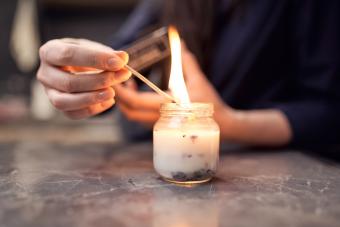
If you practice proper handwashing using the correct order of steps, your hands will be infinitely cleaner than if you'd only given them a quick rinse under the tap. Just follow these simple handwashing guidelines to get rid of those nasty germs.
Exact Order of Steps for Handwashing
According to the Centers for Disease Control (CDC) , following the correct order of steps for proper handwashing is one of the most effective ways to avoid spreading germs, which include harmful bacteria, viruses such as COVID - 19, and other micro-organisms.
1. Wet your hands with running water and then turn off the faucet to conserve water.

2. Apply a liberal amount of soap to your hands.

3. Lather your hands well, making sure to scrub between your fingers, under your rings, under your nails, and the back of your hands.

4. Keep scrubbing your hands together for at least 20 seconds.

5. Rinse the soap off under clean, running water and use a paper towel to turn off the tap.

6. Dry your hands using a fresh paper towel and then throw it away.

Further Handwashing Guidelines
Now that you have the general steps for handwashing in the proper order, these additional tips will help you reap the most benefits every time you wash.
Choosing Your Soap
Liquid, foaming, and bar soaps are all equally useful, although liquid and foaming soaps are what you'll most likely find when you're out in public. Surprisingly, the FDA says there isn't enough proof antibacterial soap is necessary to get the job done despite ad campaigns focused on making the public believe otherwise.
Best Water Temperature
While water temperature really doesn't factor into killing germs during handwashing, warm water tends to work better than cold for building up a good lather. Simply use whichever water temperature you're comfortable with so you're washing for the proper amount of time.
How Long Handwashing Should Take
As mentioned, you should lather your hands for a good 20 seconds to kill germs. You can use the old " 1, one-thousand, 2, one-thousand..." method of counting out the seconds, or you can sing the Happy Birthday song twice through. This second method is especially good for helping children understand how long they should wash before rinsing.
Avoiding Immediate Recontamination
The sink faucet handle is one of the most common surfaces that is prone to carrying germs. This doesn't mean too much while your hands are soapy because the soap is designed to kill germs. The problem is touching the tap after you've rinsed off the soap. That's why it's important to use a paper towel to turn off the tap and then throw that towel away.
Safe and Effective Drying
Always use a fresh paper towel to dry your hands, and then dispose it immediately. According to Harvard University, it's better to avoid those hot air dryers since they tend to blow microbes around. They also state that it's important not to skip hand drying since leaving your hands wet can allow bacteria to survive.
When to Wash Your Hands
You may already have a good idea of when you should wash your hands, but it's still good to review some reminders. According to the Mayo Clinic, you should always wash:
- Before touching your face, including your mouth, nose and eyes
- After blowing your nose
- After coughing or sneezing into your hands
- Before and after using the bathroom
- After helping a child or someone else use the bathroom
- Before and after changing diapers
- During all stages of food preparation
- Before and after eating
- After handling trash
- Before and after caring for someone who is sick
- Before and after treating wounds
- After touching animals, cleaning up after them, and handling their food
About Using Hand Sanitizer
Washing your hands is the best way to get rid of germs, but using hand sanitizer is better than nothing all when you can't wash properly. That's because sanitizer won't necessarily remove dirt and oils that can harbor bacteria. Ideally, you should always wash your hands first and then follow up with some hand sanitizer if you want.
Never Underestimate the Importance of Handwashing
Following the proper handwashing procedure is really quite simple, but it provides a major defense against many communicable diseases. Be sure to share these guidelines with others and practice proper handwashing with your children so everyone can stay healthier.







